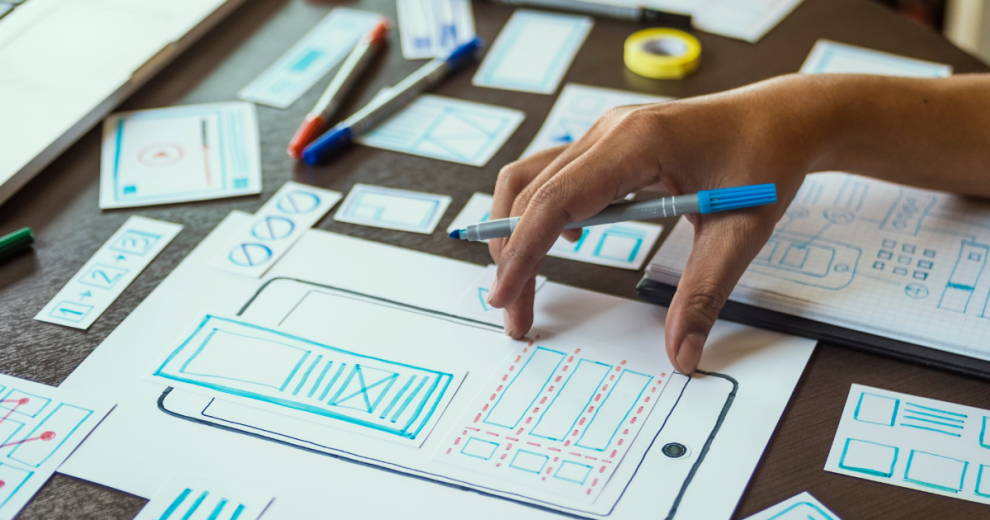You need a solid design approach to turn your app into a success. Beautiful interfaces, stunning simplicity, simple navigation, and other features may help your software stand out.
Even if you believe you are an expert in UX design, we suggest getting the guidance of experienced software test engineers. Consider hiring an agency that provides mobile testing services to ensure your product is flawless and develop a mobile experience with a primary focus on your business goals.
The phrase ‘UX’ means “user experience” and refers to how your app’s users engage with it. User experience is decided by how simple or difficult it is to engage with the user interface components produced by UI designers and direct people towards funnels. The UX design includes several basic principles that help attract a large number of consumers.
UX Design Step-by-Step Guidelines
The UX Design Process is a technique that, when followed, helps you improve or polish your user interfaces so that they are the best they can be for your business. This post will establish an overall User Experience design process, the typical sequence of the various stages, and the approaches to employ throughout each step.
Product Definition Process
The initial stage in the user design approach is product definition. The team in charge of gathering user needs depends on their business context. Throughout this phase, User Experience designers and stakeholders discuss at the highest level the product concept.
This phase generally comprises the following items:
- Interviews with stakeholders
- The mapping of value propositions
- Sketching out ideas
The whole group should confer with clients. Analyze their requirements within the context of your industry.
Product Research Procedure
The product research process is perhaps the most diverse amongst projects, as it is influenced by the product’s complexity, timeframe, resources availability, and a variety of other variables.
This phase may involve the following:
- Understand the nature of the competition.
- Examine your present domain in depth.
- Analyzing competitor tactics to see where it occurs.
Understanding UX trends, concepts, and techniques in the research methodology are crucial.
Analysis Process
Utilize the materials gathered during the Research phase in this step. Create hypothetical user-profiles and user experience visual representations using the information you’ve collected.
Creating User Profiles
Creating user profiles are imaginary characters that reflect your product’s various user categories. While developing your product, you may use these profiles as accurate depictions of your target market.
User Experience Visual Representations
All of this is accomplished via visual representations and appropriate interactions with the customer throughout the product definition process.
Graphic Procedure
Now is the time to begin working on the graphic visuals. The design team will perform the final design into action in this step.
The following are key results of the design phase:
Outline
Outlining is the most straightforward and most efficient method of visualizing our ideas. You may accomplish this by hand-drawing on paper, a chalkboard, or using a computer tool. It comes in handy during brainstorming meetings since it allows the team to envision various design options before deciding on one.
Creating a Wireframe
A wireframe is a graphic representation of the product’s page hierarchy and components or acting as the product’s backbone.
It’s also known as the design’s skeleton. It’s mainly about the end product’s overall appearance.
Making Prototypes
Prototypes focus on the design aesthetic of the User Experience designed product. It all comes down to the experience of interacting with others. A prototype’s result is identical to that of a simulation.
Design Specification
It is a process that involves putting together a list of requirements. All visual aesthetic components necessary for developers to transform prototypes into operational products are contained in design specifications.
Product Testing Method
Testing is the procedure that shows the final product’s general quality. The testers produce a list of items that need improvement and submit it to the corresponding team to be fixed.
The validation stage of the UX process includes some questions:
- Is the system simple to use?
- Is it adaptable and easy to use?
- Is it effective in resolving the customer’s problem?
- Is it reliable and attracts people to return?
Conclusion
A systematic and planned strategy is required for building excellent UX design processes. It is one of the most successful tactics for retaining existing clients and attracting new ones in today’s modern competitive industry.










Add Comment